The Temple Road is a modern take on the classic steel road bike. Temple pitches it as an all-season road bike that combines racy handling with long-distance comfort.
Electronic gear cables can be internally routed internally through its full-steel frame and fork, and there's room for wide road bike tyres.
Its skinny Reynolds 853 tubing will make retro bike aficionados wobble at the knees.
However, the Temple Road lacks some of the features and refinements of the best steel road bikes in its category.
Temple Road frameset details
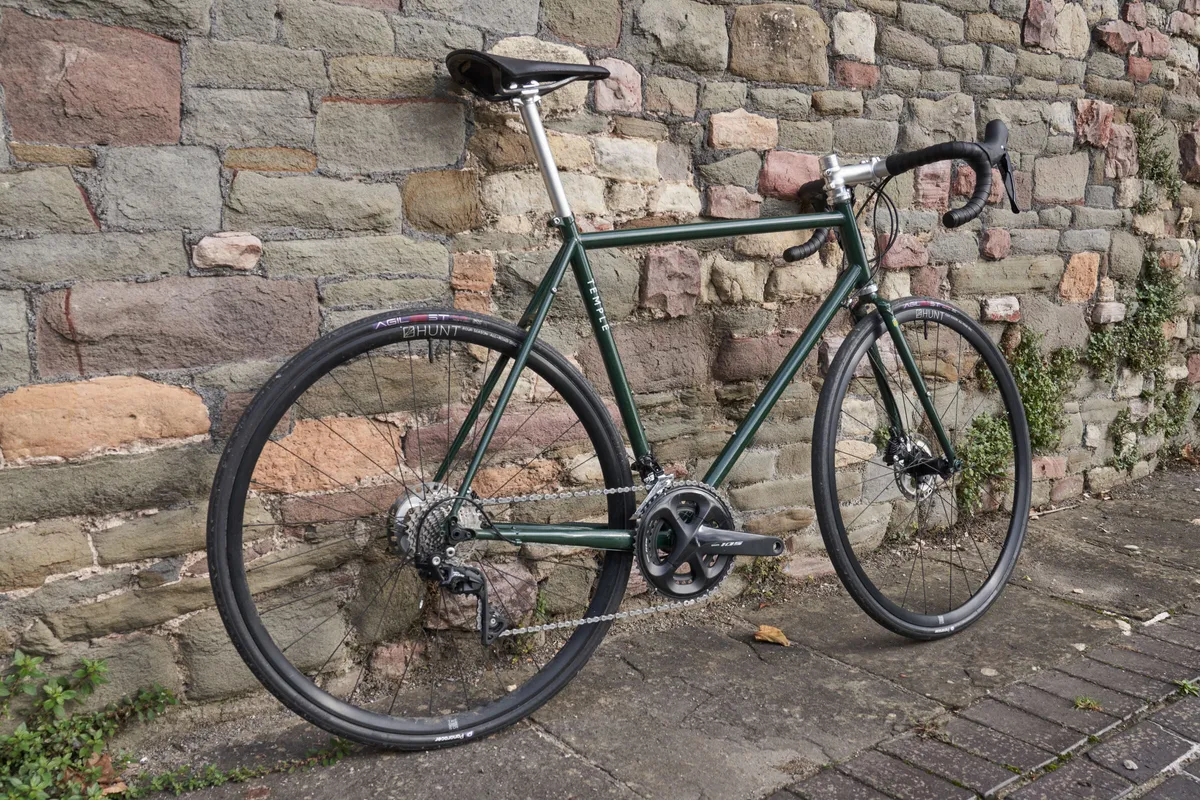
The Temple Road frame and fork are built from Reynolds 853 steel tubing. It uses flat-mount disc brakes with 12mm thru-axles and 142mm rear-dropout spacing.
Although the Road’s lugged, skinny steel fork has a classic aesthetic, it is compatible with internal cable routing, and mechanical and electronic groupsets.
Unlike the full-carbon forks of the best steel road bikes, it is not compatible with internal dynamo routing.
But the Temple Road’s mid-fork mounts allow you to fit a front, as well as rear, pannier rack. There are eyelets for full-length mudguards too.
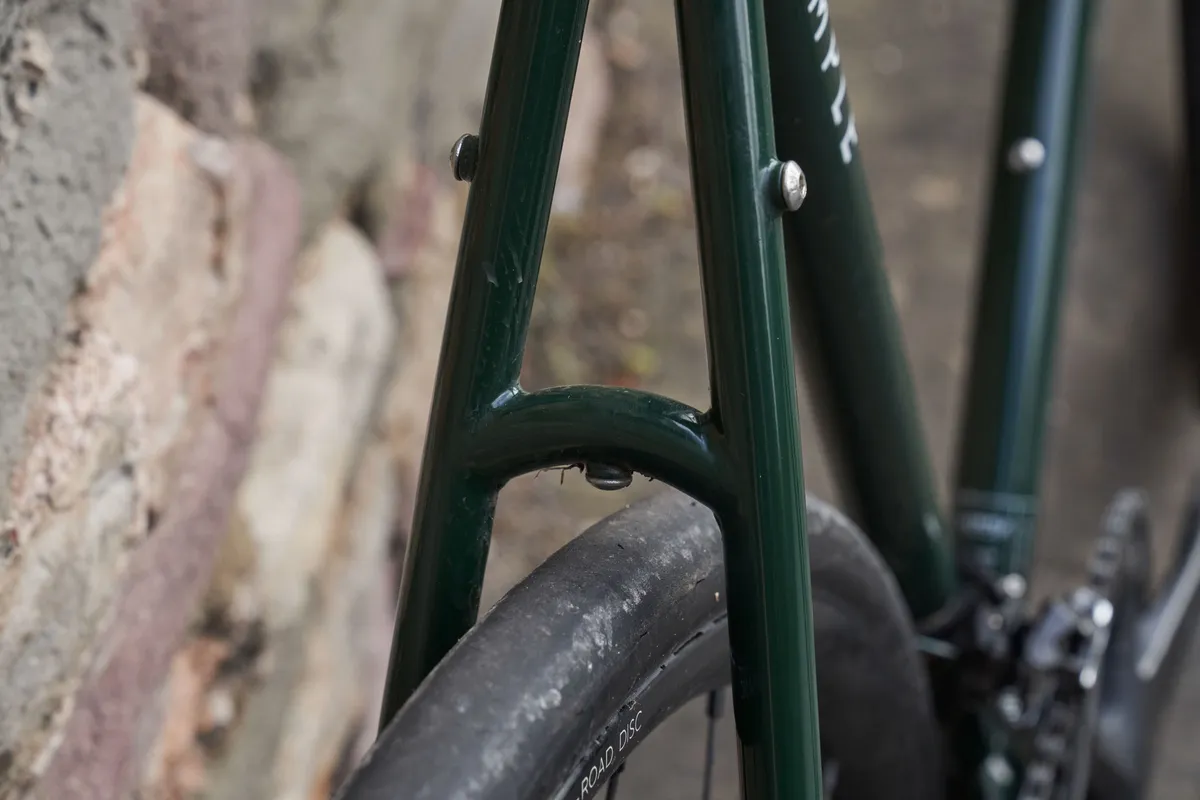
Maximum official tyre clearance with mudguards is 700x30mm, and 700x35mm without.
The Temple Road frameset only has two sets of bottle bosses, lacking a third set on the underside of the down tube as the Fairlight Strael 3.0 does.
While not essential for most riding, you'll want to carry an extra water bottle or fit a bottle around a full frame bag on audaxes or bikepacking trips.
Finer details you may appreciate include a powder-coat paint finish (in 'racing green', 'lichen green', 'slate blue' or 'sand'), curved brake bridge and UK-made barrel adjusters.
Temple Road geometry and sizing

The Temple Road is available in XS, S, M, L and XL sizes equivalent to 49cm, 52cm, 55cm, 57cm and 60cm frames respectively.
Mason offers its Resolution bike in three more sizes (eight in total), and Fairlight has Regular and Tall options in five sizes (making 10 sizes in total) for the Strael 3.0.
The Tall Fairlight frame has a taller head tube and seat tube. This means riders with long legs relative to their torso, like myself (I own a size 58T Strael 3.0), don’t have to go up a frame size where the top tube, and therefore reach, could be too long.
I fell between the large (57cm) Temple Road I tested and a medium.
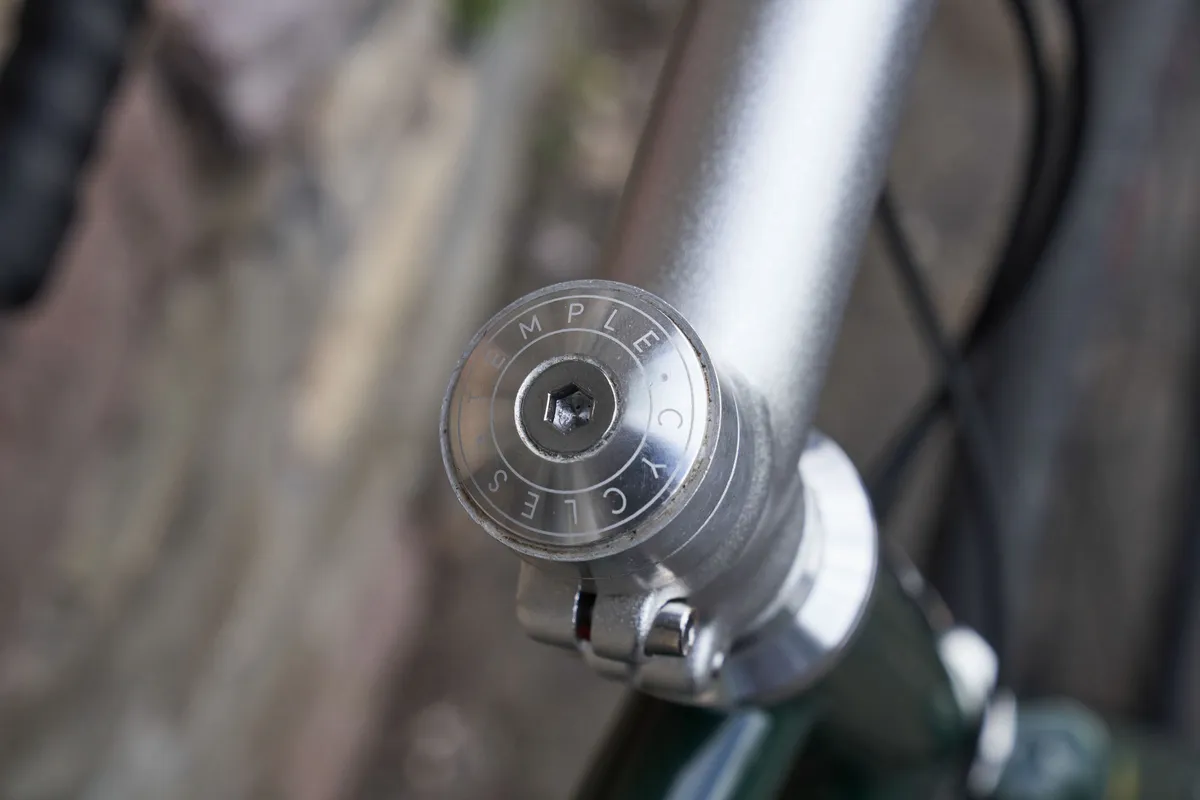
To compensate for the shorter seat tube and head tube than on my Strael, I extended more seatpost and ran an extra spacer under the stem.
With 406mm of reach, the 110mm stem stretched me out a touch more than I like when munching the miles. But this helped me in trying to get low and aero when riding faster, which Temple also intends the Road for.
The Road’s 73-degree head angle and 73.5-degree seat angle are more typical of a race bike than an endurance road bike. I’ll return to the pros and cons of this later.
| Frame | XS | S | M | L | XL |
|---|---|---|---|---|---|
| Seat tube length (mm) | 490 | 520 | 550 | 570 | 600 |
| Top tube length (mm) | 520 | 540 | 560 | 580 | 605 |
| Reach (mm) | 380 | 389 | 392 | 406 | 428 |
| Stack (mm) | 523.7 | 544.4 | 567 | 586 | 613 |
| Head tube length (mm) | 105 | 125 | 145 | 165 | 191 |
| Head angle (degrees) | 71.5 | 72.02 | 73 | 73 | 73.5 |
| Seat angle (degrees) | 75 | 74.5 | 73.5 | 73.5 | 73 |
| Chainstay length (mm) | 415 | 415 | 415 | 415 | 415 |
| Bottom bracket drop (mm) | 70 | 70 | 70 | 70 | 70 |
| Wheelbase (mm) | 984.6 | 996.1 | 996.7 | 1,017 | 1,043 |
| Fork offset (mm) | 42 | 42 | 42 | 42 | 42 |
| Fork axle to crown (mm) | 368 | 368 | 368 | 368 | 368 |
Temple Road specification and build

The Temple Road is available as a frameset only for £1,295 / €1,595. Temple ships worldwide and will confirm US pricing at a later date.
Complete bikes will be available to order from 6 November, specced with a choice of two 12-speed Shimano groupsets: 105 R7100 mechanical for £2,995 or Ultegra R8170 Di2 for £4,295.
Due to limited availability of the latest 12-speed 105 mechanical groupset prior to the official launch of full Temple Road builds, I tested the frame equipped with the still-excellent Shimano 105 R7020.
Like my test bike, the standard spec in both builds includes Hunt 4 Season disc wheels, 700x30c Panaracer Agilest TLR tyres and an alloy Temple 27.2mm seatpost, handlebar and stem.
However, the Brooks C13 saddle will be an upgrade option from the Selle Italia Brand X. You can customise many other components when ordering your bike on Temple's website.
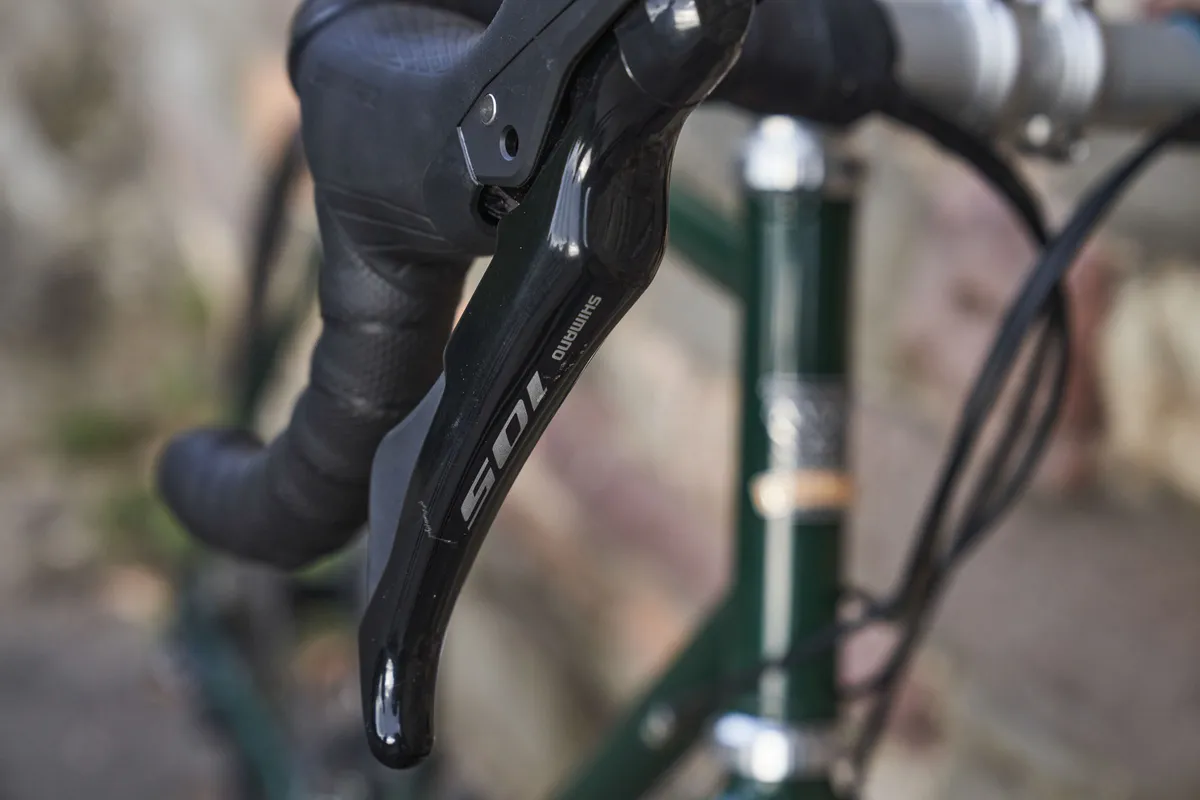
On the face of it, both Temple Road specs are competitive with similarly priced steel road bikes that are also designed to be ridden fast as well as far.
The Mason Resolution costs £3,000 with Shimano 105 R7100 and £4,365 with Ultegra R8100 Di2. This compares to the Fairlight Strael 3.0, which is priced at £2,549 with 105 R7100 and £4,049 with Ultegra R8100 Di2.
But the Resolution and Strael arguably have better finishing kits in both 105 and Ultegra builds.
They both have full-carbon forks as standard, and carbon seatposts in the Ultegra Di2 builds. The handlebar and stem are from Deda on the Resolution and FSA on the Strael.
Given how I found the Road’s Temple finishing kit and steel fork, I’d say its competitors have the edge in these areas.
Temple Road ride impressions
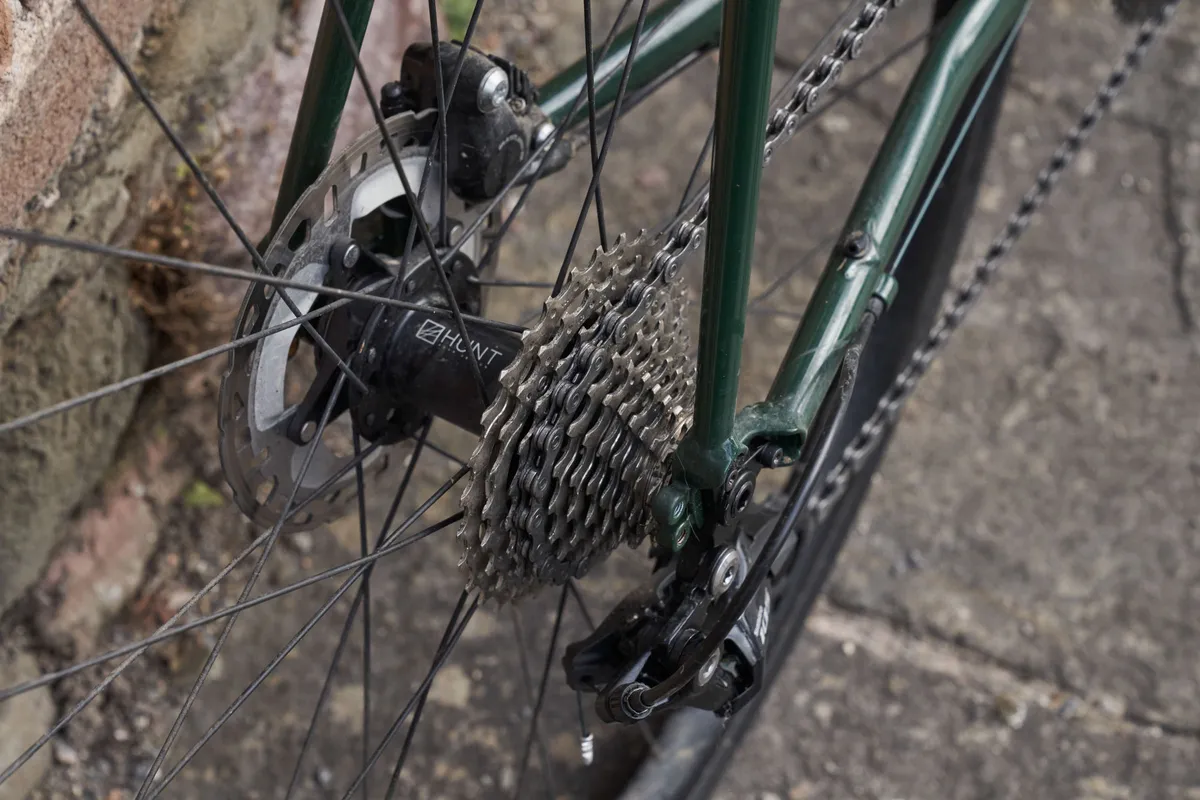
Although Temple says you can use the Road for touring, it could hardly be more different from the stereotypical steel touring bike.
It’s much lighter, stiffer and features more aggressive geometry.
The size-large frame (and full-length steerer tube) weighs a claimed 3kg and I weighed my test bike, without pedals and bottle cages, at 9.73kg.
That's on par with premium steel frames such as the aforementioned Strael and Resolution.
Despite the Road’s weight, even on 20 per cent gradients, I didn’t feel like I was hauling a laden butcher’s bike uphill.
I am, admittedly, a decent climber. But in its 105 12-speed mechanical guise, the Temple Road will be available with a choice of 11-34t and 11-36t cassettes (easier than the 50/34T and 11/30t gearing on my test bike).
‘Al dente’ frame stiffness

Older steel road frames are known for being excessively flexible. But the Temple Road is on the al-dente side of noodly.
When you stomp on the pedals in the saddle, there’s a degree of bottom-bracket flex. This is perhaps accentuated by how the steep seat angle puts you right over the bottom bracket.
This sensation may not signal optimal pedalling efficiency, but it was engaging to experience the effort I was expending.
Likewise, the steel fork flexes as you sprint out of the saddle, particularly in a crosswind. This ‘fork flutter’ takes some getting used to, but isn’t that disconcerting.
If ruthlessly efficient and stiff carbon frames put you off, the more tactile experience of riding the Temple Road may appeal to you.
Speedy steel
Aesthetic rather than aerodynamic gains are the objective of the Temple Road’s snooker-cue-thin steel tubes. That said, hammering along on the flat, in the fairly aero position the low-ish and long-ish geometry helped me into, felt fast.
And the average speed of my sprightlier test rides suggests the Temple Road is no slowcoach for a steel bike.
The versatile Hunt 4 Season Disc wheels live up to their name. Balancing weight, acceleration and comfort, they complemented the performance of the Panaracer Agilest TLR tyres.
But, as Simon von Bromley noted, with negligible puncture protection, I’d swap them for one of the best all-season tyres to continue road cycling through winter.
Sporty handling

The Temple Road’s steep head angle, and relatively short wheelbase (1,017mm in size large) and chainstays (415mm in the same size), contribute to its nimble handling.
For context, these measurements are 8mm and 5mm shorter than the equivalent size of the Giant Defy Advanced SL 0. In his review, Warren Rossiter called this a fast-handling endurance road bike.
On climbs, the Temple Road wiggles responsively upwards as you accelerate. While descending, you can whip around corners without suffering from a lack of stability on poor-quality road surfaces.
What’s good on shorter, faster rides is less good on longer outings though. The race-bike like handling demands more control and therefore more concentration than bikes that behave more sedately.
As a result, after three hours or more in the saddle, my shoulder and neck were more fatigued than I’d expect from an endurance bike. And this was not due to a very narrow handlebar.
I concluded that the Temple Road’s lack of front-end compliance was also to blame.
Fork feedback

From the off, a lot of road buzz reverberated through the handlebar on the broken tarmac that characterises UK roads.
This feedback was worse than from a steel road bike with a carbon fork, and alloy handlebar and stem. Over multiple hours, I felt early symptoms of hand and wrist pain.
Because steel is heavier than carbon, steel forks are usually made thinner to save weight. This leaves less material to absorb vibrations, leading to a harsher ride.
It’s also possible that the Temple handlebar and stem, made from stylish brushed aluminium, are not the most compliant.
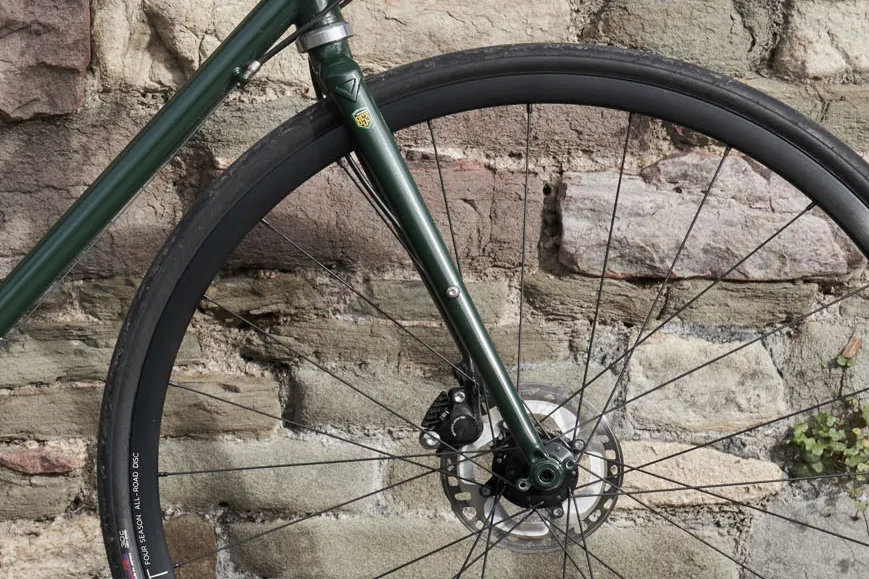
The supple Panaracer Agilest tubeless tyres probably improved comfort. Taking advantage of the Temple Road’s clearance for 35mm-wide tyres (without mudguards) could also mitigate the fork’s harshness.
The steel fork isn’t all style over substance because, unlike carbon forks, it has eyelets halfway up. Mid-fork eyelets enable you to fit a front rack to carry extra luggage while bikepacking or commuting.
Overall, though, I found the Road’s steel fork looks better than it rides. The fact that the Strael and Resolution pair carbon forks (compatible with internal dynamo routing) with steel frames, and cost a similar amount, is a big advantage over the Road.
Temple Road bottom line
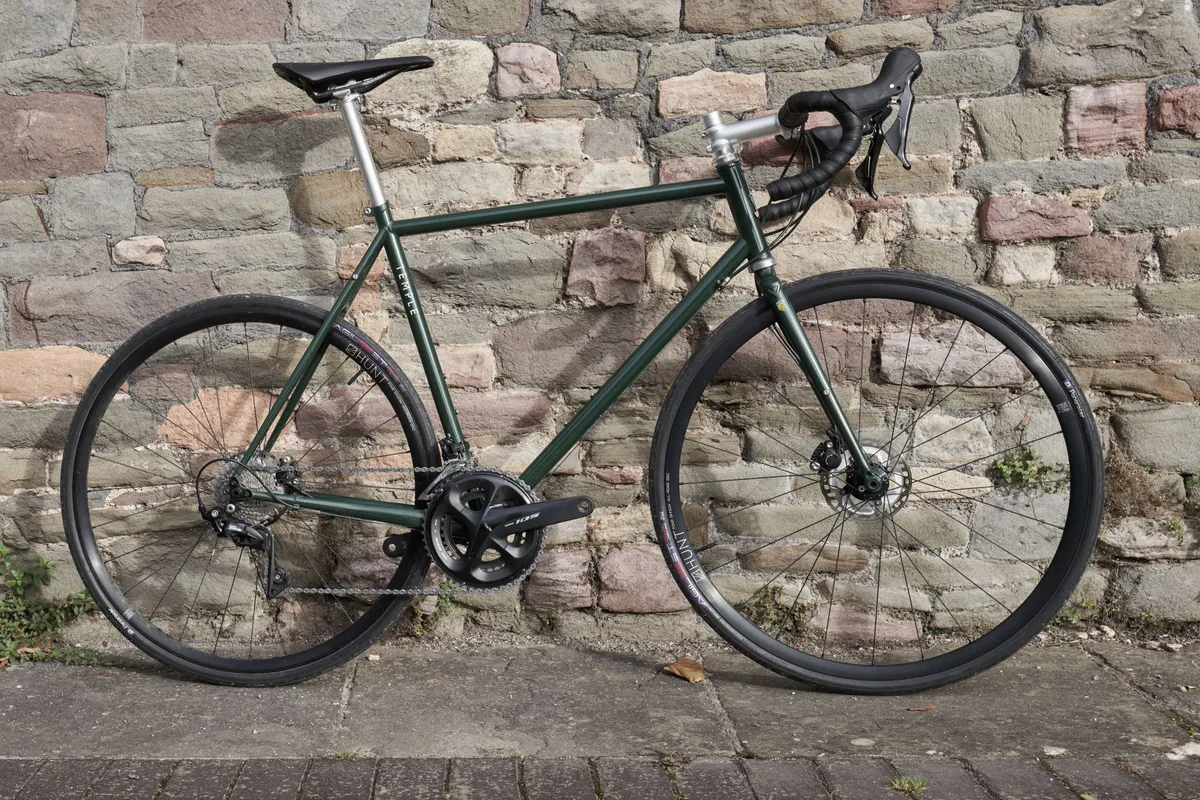
The Temple Road is a good steel road bike that doesn’t hit the heights of its rivals.
The size range isn’t as broad as Mason or Fairlight’s. The performance of the Road steel fork underwhelms. The absence of internal dynamo routing on a bike intended for long-distance rides is also an omission, in my view.
Although the Road’s lively ride and nifty handling are fun during harder efforts, you may want something steadier for big days out.
If steel is the be-all and end-all, and the Temple Road’s looks win you over, you'll enjoy riding it too.
But if you have £3,000 to £4,000 to spend on a non-carbon bike, there are better direct rivals, and the best alloy road bikes will provide better value.
Product
| Price | 1595.00 EUR,1295.00 GBP |
| br_whatWeTested | Temple Road frameset with Shimano 105 R7020 groupset |
| Weight | 9.7300, KILOGRAM (57cm) - Built bike without bottles cages or pedals |
Features
| Fork | Reynolds 853 tubing |
| br_stem | Temple |
| br_chain | Shimano CN-HG601 11-speed |
| br_frame | Reynolds 853 steel |
| br_motor | N/A |
| Tyres | Panaracer Agilest TLR, 700x30c |
| br_brakes | Shimano 105 R7070 flat-mount |
| br_cranks | Shimano 105 R7000, 11-speed, 50/34T |
| br_saddle | Selle Italia Model X |
| br_wheels | Hunt 4 Season Disc |
| br_headset | Temple Adventure Disc Headset |
| br_shifter | Shimano 105 R7020 |
| br_cassette | Shimano 105 CS-R7000, 11-speed, 11-30t |
| br_seatpost | Temple, 27.2mmx300mm |
| br_gripsTape | Selle Italia Smartape, black |
| br_handlebar | Temple |
| br_bottomBracket | Shimano – Black |
| br_availableSizes | 49cm, 52cm, 55cm, 57cm, 60cm |
| br_rearDerailleur | Shimano 105 RD-R7000, 11-speed, short cage |
| br_frontDerailleur | Shimano 105 FD-R7000,11-speed |
